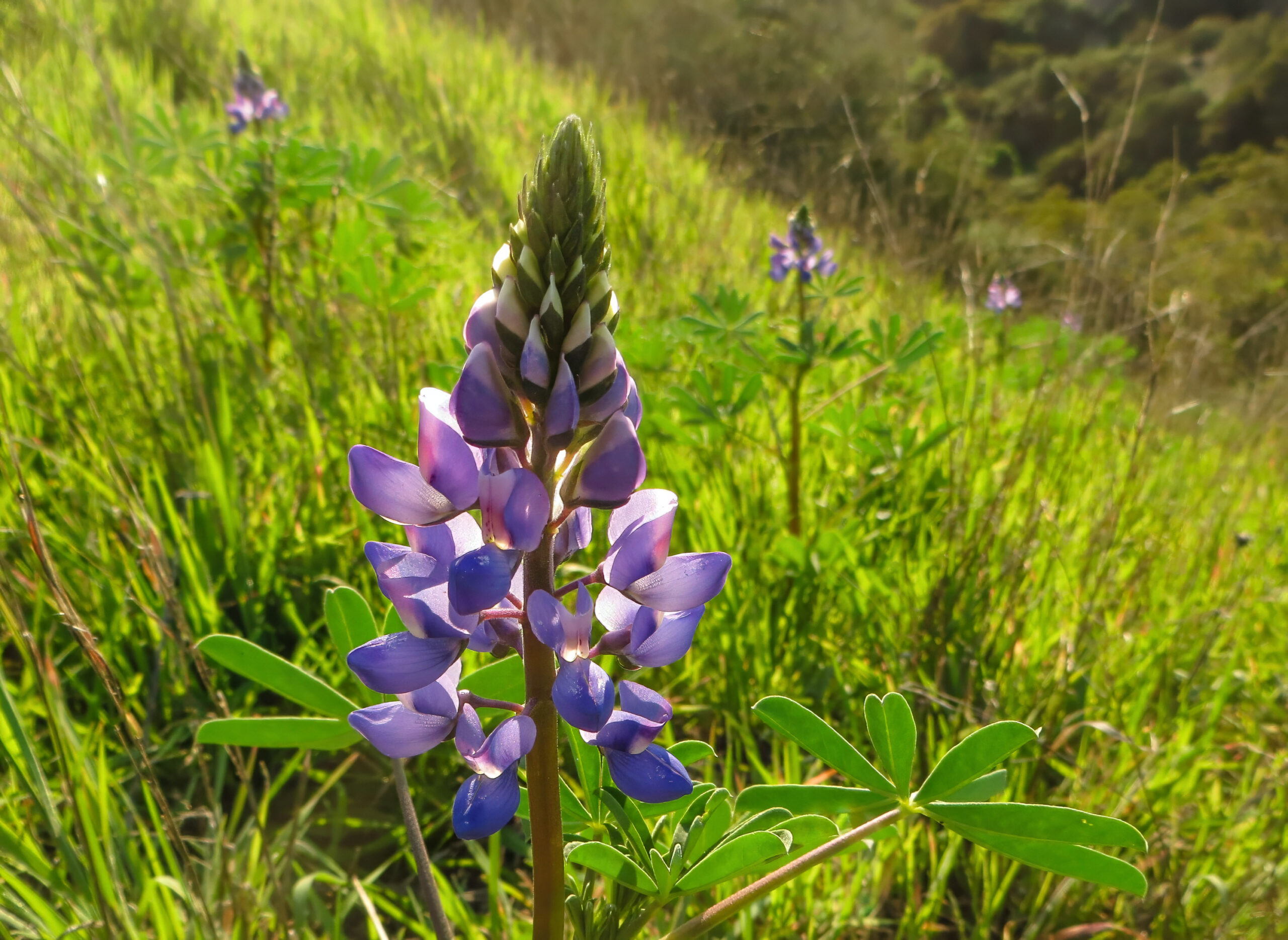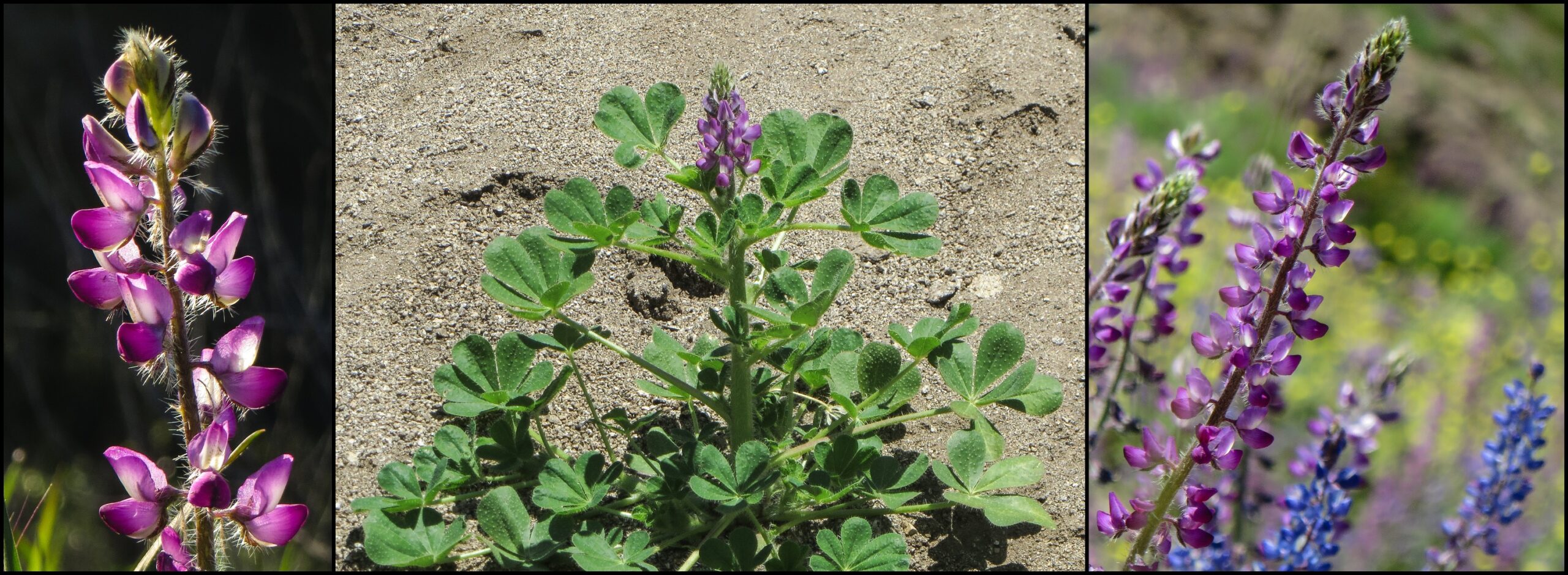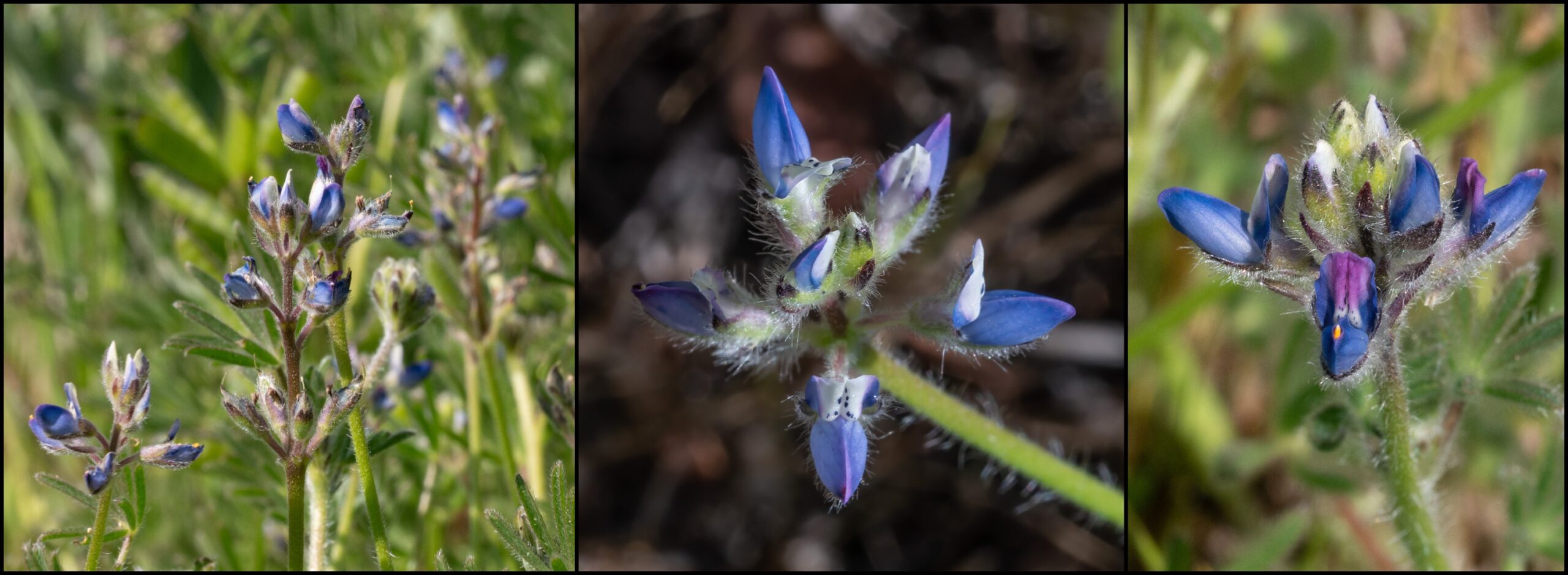Occasional observations on the wildflowers of 91011.
Nightmare on Lupine Street. No, seriously, that’s was my original title for this post! You see, I’d wager that the three most recognizable wildflowers in California are poppies, paintbrush, and lupine — ’cuz they’re so easy, right? Oh, don’t I wish! In fact, the “true” California poppy shares its genus with a dozen other yellow-gold poppies, and even the simple red paintbrush comes in a couple dozen species. And sure, those breathtaking clusters of blue-and-white blossoms are instantly recognizable as lupine, . . . but which lupine . . . of California’s 75+ species? This is why lupine can be a nightmare: sometimes you need tweezers and a magnifying glass (not joking here!) to pull the blossoms apart and i.d. them.
Fortunately, 91011 is home to only six or eight lupine species. So this is Lupine 101: an intro to three easy-to-identify lupines that grow within our city limits.

Arroyo Lupine (Lupinus succulentus) looks more like a “textbook” lupine than any other you’re likely to find here. It runs about 12″-18″ tall, blooms with mostly single stalks, and manifests that fresh blue-and-white cluster of blossoms that most people associate with wild lupine. Unfortunately, it’s not all that common. There’s a nice patch to be found just off the west shoulder of the Cherry Canyon Fire Road, about a quarter-mile above Five Points.

The color of Stinging Lupine starkly contrasts with the blue of Western Lupine (on right, Verdugo Mtns.)
Stinging Lupine (Lupinus hirsutissimus) is perhaps the single most identifiable lupine species in all of California. You could actually identify it in the dark — just squeeze your hand lightly around the stalk and describe what you’re feeling. (I did this — once! — because I was so excited to finally see this curious lupine.) It really does sting, and you can easily see its prickles. In fact, even its unusually teardrop-shaped leaves have little prickly pimples on them. And to top it all, Stinging Lupine is almost always much more reddish-purple than the usual lupine-blue. Curiously, though there’s a nice stand of Stinging Lupine on Figueroa Street, about a mile southeast of Cerro Negro, it doesn’t seem present in Cherry Canyon. But it does grow reliably along the Open Space Trail, up on the flanks of Mt. Lukens.

Miniature Lupine (Lupinus bicolor) is by far the most abundant of these three. Unfortunately, it lives up (or down) to its name, because it’s also by far the smallest of these three. Miniature Lupine does have the typical blue-and-white blossoms, even if they sometimes seem a bit spindly; and its leaves have the telltale “slender-fingered” shape that is found on so many other lupines. You’re likely to walk past it, though, because it’s such a low-growing green plant, and the blue blossoms can disappear among grasses and other greenery. But if you get down close, you’ll see that it’s got all the color and delicacy of its more majestic kin. And it survives well along many of our fire roads and trails (try Five Points for a start) — and it can even be found not too far from Cherry Canyon along paved city sidewalks.
When to find them. Most of our lupines are spring bloomers — April and May. But if you gain some elevation, say, by hiking higher on Mt. Lukens, you’re likely to see additional lupines in bloom in June, or later. You might also see some species we’ll cover, someday, in Lupine 102.
- For more about lupines in general, visit Wikipedia.
- For info about growing Arroyo, Stinging, or Miniature Lupine in your yard, visit Calscape.org.
- For distribution maps, taxonomy, and more photos, visit Calflora.org
- You can also read (or subscribe to) other occasional notes on the wildflowers of 91011.

